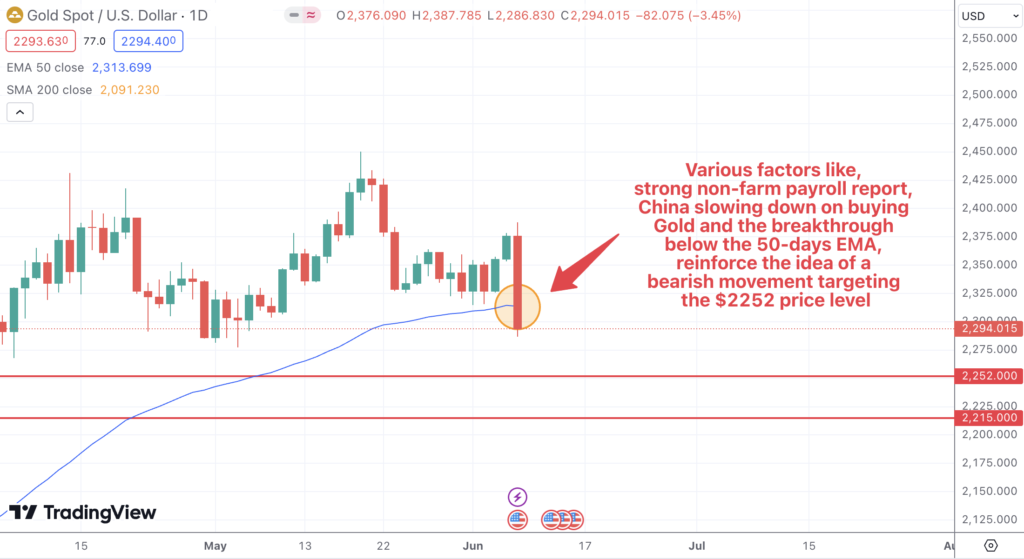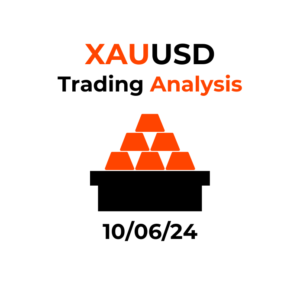Key Takeaways
- Gold prices are under pressure due to strong US employment data and a halt in Chinese gold purchases.
- The recent failure to maintain a bullish breakout has confirmed a bearish trend, with key support levels at $2,301 and potential targets around $2,252 and $2,215.
- The strong US labor market reduces the likelihood of imminent rate cuts, strengthening the US dollar and weighing on gold prices.
- Market participants will closely watch the US Nonfarm Payrolls report and other economic data for further insights into the Fed’s policy decisions.
- Geopolitical tensions and global economic developments will continue to influence gold prices, with a bearish outlook likely in the short term.
Market Dynamics and Recent Performance
Gold prices have been experiencing significant volatility, marked by a recent failure to maintain a bullish breakout, leading to a sharp sell-off. This decline was exacerbated by strong US employment data, which indicated robust job growth and high wages, suggesting persistent inflationary pressures. As a result, the benchmark 10-year US Treasury bond yield surged, making non-yielding assets like gold less attractive. Additionally, China’s recent halt in gold purchases after 18 months of aggressive buying has further pressured gold prices. The combination of a strong US labor market and reduced Chinese demand has shifted market sentiment toward a bearish outlook.

From a technical perspective, gold has broken below several key support levels, including the 50-day moving average, confirming a bearish trend. The recent low of $2,301 is a critical support level, coinciding with the 50% Fibonacci retracement. A break below this level could lead to further declines, with initial targets around $2,252 and extended targets near $2,215. On the upside, resistance is seen near the $2,340 level, and a decisive break above this could signal a potential recovery.
Fundamentally, the outlook for gold is influenced by expectations surrounding the Federal Reserve’s monetary policy. The strong US labor market data has reduced the likelihood of imminent rate cuts, with traders now expecting the first rate cut in November rather than September. This has strengthened the US dollar, further weighing on gold prices. Moreover, China’s pause in gold purchases and the potential for other central banks to follow suit have increased uncertainty in the market, leading to increased volatility.
Looking Forward
In the coming week, market participants will closely monitor key economic data, particularly the US Nonfarm Payrolls report, which will provide further insights into the health of the labor market and the Fed’s future policy decisions. Additionally, geopolitical tensions and global economic developments will continue to play a significant role in influencing gold prices. Traders should be prepared for potential further declines in gold prices, especially if the economic data continues to support a strong US economy and high interest rates.

